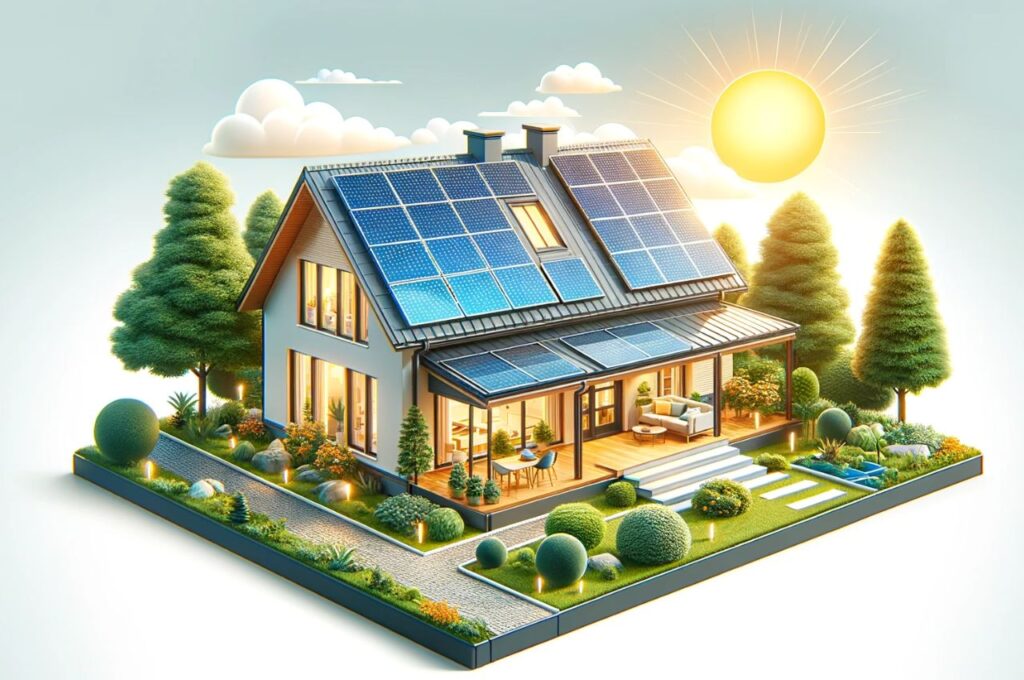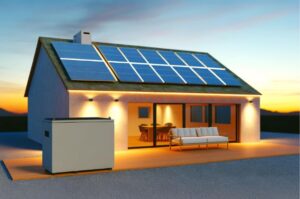
In an era where sustainable living is more than a choice, it’s a responsibility, harnessing the power of the sun has never been more crucial. Solar energy is not just a trend; it’s a practical solution to our energy needs. This article will guide you through the journey of transforming your home with solar energy, making it an efficient and eco-friendly haven.
Understanding Solar Energy
Before exploring solar panel installation for home, a deep dive into the essence of solar energy is crucial. Solar energy harnesses the sun’s power, converting its light into electricity. This conversion occurs through two primary methods: photovoltaic (PV) panels and solar thermal systems. PV panels, the more commonly used, directly convert sunlight into electricity using semiconducting materials that exhibit the photovoltaic effect. Solar thermal systems, on the other hand, use sunlight to heat water or air for use inside the home, a process often associated with the term hot water solar systems.
This sustainable energy source is pivotal in the global shift towards clean energy. Its inexhaustible nature contrasts sharply with the finite resources like coal and oil. By choosing solar energy, homeowners tap into a power source that is abundant, free, and available every day. Moreover, technological advancements continue to improve the efficiency and accessibility of solar energy, making it a more viable option for an increasing number of households.
Evaluating Your Home for Solar Energy
The journey to solar transformation begins with a thorough evaluation of your home’s solar potential. This assessment involves examining the amount of sunlight your property receives, which depends largely on geographic location and orientation. A south-facing roof typically receives the most sunlight. The roof’s size and shape also play a critical role in determining how many solar panels can be installed. Additionally, the structural integrity of the roof is crucial; it must be strong enough to support the weight of the panels.
Local climate factors should not be overlooked. Areas with higher average sunlight will naturally yield more solar energy, but even regions with less sunny days can effectively utilize solar panels. The introduction of high-efficiency panels has made solar energy feasible in less sunny climates. It’s also worth considering any local regulations or homeowner association rules that might impact solar panel installation.
Planning and Budgeting
Solar energy, while being a sustainable choice, is also a significant financial decision. Begin by analyzing your household’s electricity consumption patterns to determine the size and type of solar system required. This step involves looking at your electricity bills to gauge your average energy usage.
The financial aspect of solar energy is multifaceted. While the initial outlay can be substantial, the long-term benefits often outweigh the upfront costs. Solar panels can dramatically reduce monthly electricity bills and, in some cases, completely eliminate them. Additionally, many governments offer incentives, tax breaks, and rebates to encourage solar adoption, which can help offset the initial investment. Financing options like solar leases or power purchase agreements (PPAs) can also make solar energy more accessible.
Choosing the Right Solar Energy System
Selecting the appropriate solar energy system for your home is a critical decision. The market offers a range of solar panels, each with unique characteristics. Monocrystalline panels, known for their efficiency and sleek appearance, might be ideal for homes with limited roof space, while polycrystalline panels can be a more cost-effective option.
Inverters, an essential component of solar systems, convert the direct current (DC) electricity generated by the panels into alternating current (AC) electricity used in homes. String inverters and microinverters are the two main types, each with specific advantages.
The choice between on-grid and off-grid systems depends on your energy needs and location. On-grid systems are connected to the public electricity grid and can offer financial benefits through net metering, where homeowners are credited for the excess electricity they generate. Off-grid systems, while more complex and requiring battery storage, provide complete independence from the utility grid.
Installation Process
The installation of a solar energy system is a process that demands expertise and precision. Choosing a reputable and experienced installer is essential for a successful solar energy transformation. The installation involves several stages, including obtaining necessary permits, which vary by location. A professional installer can navigate these requirements, ensuring compliance with local regulations and standards.
Maintenance and Monitoring
Solar systems are renowned for their low maintenance requirements. The primary task is keeping the panels clean and free from obstructions like shade or debris, which can affect performance. Modern solar systems often include monitoring technology, enabling homeowners to track energy production and system health in real-time. Regular monitoring and maintenance ensure optimal performance and longevity of your solar system.
Environmental and Economic Impact
Adopting solar energy has profound environmental and economic impacts. Environmentally, it significantly reduces your household’s carbon footprint by decreasing reliance on fossil fuels. Economically, solar can increase property value and offers long-term savings on energy bills. The return on investment extends beyond monetary gains, contributing to a more sustainable and energy-independent future.
Conclusion
Adopting solar is indeed a transformative step towards a sustainable future. It’s an investment that pays dividends not only to the planet but also to your personal finances. By embracing this clean, renewable energy source, you’re positioning yourself at the forefront of an eco-conscious movement, contributing to a greener, more sustainable world. With the right system and approach, you can turn your home into an eco-friendly powerhouse, a beacon of modern, responsible living.
This transition to solar energy is more than just a technological upgrade; it’s a commitment to a healthier environment and a testament to the innovative spirit of homeowners who are ready to make a difference. Let your home be a shining example of how individual actions can pave the way for a brighter, cleaner future for generations to come.
Also read: How Electric Vehicles Work: A Comprehensive Guide







